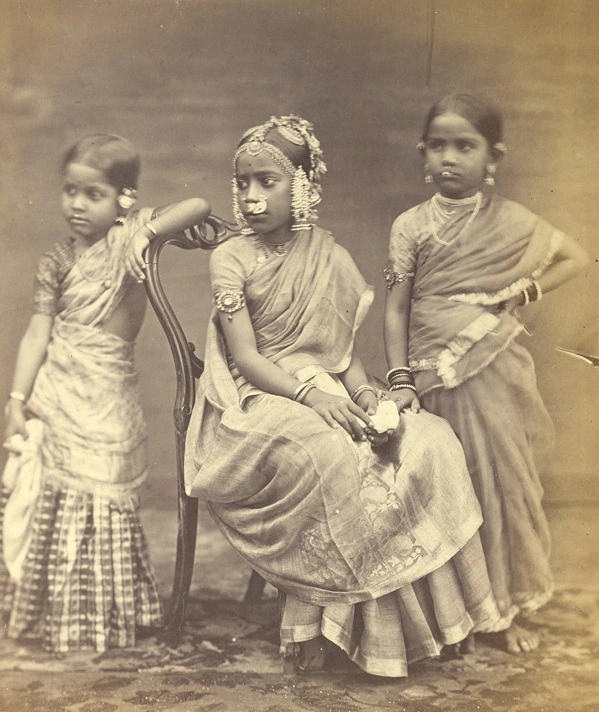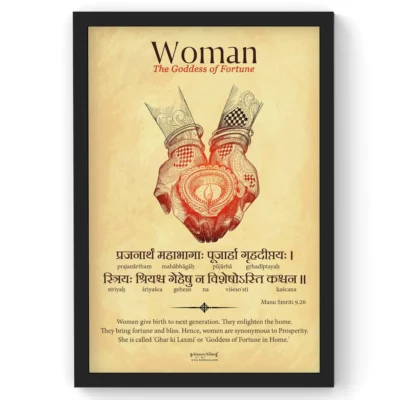
Hindu culture is an amalgamation of vibrant and festive rituals that behold essence in their unique form. The religion comprises rituals that inject spirituality and the feeling of devotion into human life. They help us stay connected to our roots while bridging the significant gap between contemporary life and unenlightened religious customs. Rituals are a window into the past culture and help us understand the essence of the pre-modernist consciousness. Of the many rituals performed in the Hindu religion, an unheard and exclusive ritual is Ritushuddhi or Ritu Kala Samskara. It marks the flourishing of a girl into a woman, both physically and spiritually, as she encounters menarche or her first period. This coming-of-age ceremony for girls is blessed by the presence of her family and friends — conferring the epitome of our very existence. The day is celebrated as a milestone in the girl’s life as she sets foot in womanhood, evidently a striving journey of sacrifices.
The Initiation
Having numerous forms all over the Indian culture, like Manjal Neerattu Vizha in Tamil Nadu, ‘Peddamanishi Pandaga‘ in Andhra Pradesh and ‘Tuloni Biya‘ in Assam, this ritual is the pivot that illustrates the real essence of womanhood. On the day of her menarche, the girl and her family pay a visit to the Hindu seer to foresee her fortune. The priest fixes an auspicious date to perform the Ritushuddhi ritual. He analyses her kundali and discusses the girl’s present state of mind and the peaks and valleys of her upcoming marital life. He also informs about the number of days the girl requires solitude to outright the Ritushuddhi ritual. This ritual resembles purity, prosperity and fertility. Knowledge is imparted about the phenomenon by the ancestors in a small gathering.
A Boon, A Bane?
The free-spirited girl experiencing her first period is isolated in a small hut called ‘Kudisai’, built by her maternal uncle with coconut, mango and neem leaves. Shadowing ancient stereotypical notions, contemporaries consider this as an extraneous act. However, the belief followed the warm consideration for a menstruating girl who must rest and must be fed only the best. Every morning she is served nutritious food prepared with ingredients such as sesame oil, urad dal (black gram split), and a bunch of fruits to empower her body physically and minimise painful periods’ aftermath. She is prohibited from seeing men during this period and entering holy places or even the kitchen. While for old generations, the idea revolved around times when means of hygiene were scarce, today, the ritual demands extensive reconsideration.
According to the ritual, he is the one who pays tribute to the girl onsetting her new journey. To grace her burgeoning beauty, he blesses her with elements, including a saree, sringar, illuminating accessories and a variety of fruits.
 The Haldi
The Haldi
The teenager wears a soft yellow cotton or silk attire and is embellished with ornaments made of flowers on the first day. The most vital component of the ritual is the haldi paste. It is a fragrant concoction consisting of turmeric, sandalwood powder, milk and rose water. It is applied to the girl’s body with marigold flowers or leaves of a neem tree. The yellow hue embraces fertility; the girl is smeared with Haldi as she bears the responsibility of inculcating new life within. The Haldi denotes purity and optimism. Haldi serves as a protective shield so that she can enter a new life phase without any unfavourable obstacles.
The Ceremonial Bath
As the name suggests, shuddhi means purification. Cleansing is an integral part of every Hindu ritual. This bathing ritual is believed to clean the body and purify the soul. After the colourful ceremony, the girl washes her Haldi with a virtuous bath, also called the Mangal Snan, holding a branch of a neem tree. It is believed that the neem tree is the abode of Sitala, who has the vigour to cure diseases and ward off the effects of an evil eye. The girl is bathed by five women, excluding her mother. This ceremonial bath is concluded by doing an aarti of the girl to perpetuate the pure divine transformation.
A Step From Innocence Into Elegance
An extravagant ceremony takes place after the rejuvenating ceremonial bath. Drenched in gold ornaments, pulling off six yards of elegance, gracing her beauty with a sringar, and hair pinned with an aromatic gajra, the free-spirited girl transforms into a woman shouldering the responsibilities of womanhood. This ceremony is called the half-saree.
The elements of Shringaar articulated by the teenager are sindoor, bindi, mehendi, kajal, choodiyan, payal and gajra. Of all, sindoor is the most significant component of the rituals being conducted by the Hindus. Beholding its unique essence for every ritual, it is first applied to the idols and then as tilak to the girl. The presence of mercury helps in cooling down the temper. Bindi accentuates the girl’s attributes, adding to her beauty while marking her maturity. Mehendi, the fundamental element of suhagan’s srinagar that adds colour to the palms. Its medicinal properties include healing minor cuts and eliminating stress. Kajal, makes the innocent eyes of the girl look expressive and bold, emphasising her maturity. The elemental jewellery includes bangles and anklets for unmarried girls.
Gajra is a bunch or a string of flowers tied to the long plaited hair of the girl. The sense of freshness and calmness exuded by jasmines in the gajra is majestic.
Married women-family members and fraternity dance and sing to the rhythm making the ritual fun and frolic. A flavoursome feast follows the music and dance. Celebratory favours such as gifts, kuttu chawal, flowers are shared with attendees along with adhirasam — a delicious crispy sweet made of rice flour and jaggery dough.
While Hinduism is a way of life, its rituals such as ritushuddhi bring a heart-warming approach to celebrating women in a way the ancestors thought was dignity. However, many still believe this ritual is an unjust sexualisation of girls while it proclaims embracing the true meaning of women and affirmation of traditional values. Hinduism reveres a woman for truly being an embodiment of strength, sensuality and vigour; the celebration is its mere indication.





 The Haldi
The Haldi


